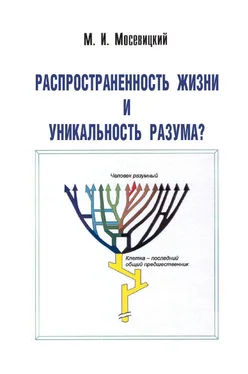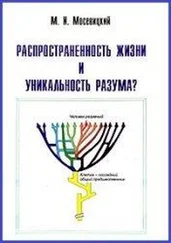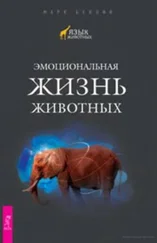Reichow M. K. et al. (2002) 40Ar/39Ar dates from the West Siberian Basin: Siberian flood basalt province doubled. Science, 296, 1846―1849.
Reiss A. L. et al. (1995) Contribution of the FMR1 gene mutation to human intellectual disfunction. Nat. Genet., 11, 331―334.
Relethford J. H. (2001) Ancient DNA and the origin of modern humans. Proc. Natl. Acad. Sci. USA, 98, 390―391.
Rettberg P. et al. (2002) Survival of microorganisms in space protected by meteorite material: results of the experiment fiEXOBIOLOGIEfl of the PERSEUS mission. Adv. Space Res. 30, 1539―1545.
Ribeiro S. and Golding G. B. (1998) The mosaic nature of the eukaryotic nucleus. Mol. Biol. Evol., 15, 779―788.
Richards M. (2004) Perfecting people: selective breeding at the Oneida Community and eugenics movement. New Genet. Soc., 23, 47―71.
Rightmire G. P. (1998) Evidence from facial morphology for similarity of Asian and African representatives of Homo erectus. Am. J. Phys. Antropol., 106, 61―85.
Rightmire G. P. et al. (2006) Anatomical descriptions, comparative studies and evolutionary significance of the hominin skulls from Dmanisi, Republic of Georgia.
J. Hum. Evol., 50, 115―141.
Rivera M. C. and Lake J. A. (2004). The ring of life provides evidence for a genome fusion origin of eukariotes. Nature, 431, 152―155.
Rosa L. P. and Faber J. (2004) Quantum models of the mind: are they compatible with environment decoherence? Phys. Rev. E Stat. Nonlin. Soft Matter Phys., 70, 031902.
Rossignol-Strick M. and Barghoorn E. S. (1971) Extraterrestrial abiogenic organization of organic matter: the hollow spheres of the Orgueil meteorite. Space Life Sci., 3, 89―107.
Rossini P. M. and Rossi S. (2007) Transcranial magnetic stimulation: diagnostic, therapevtic, and research potential. Neurology, 68, 484―488.
Routtenberg A. (2000) Enhanced learning after geneticoverexpressionof a brain growth protein. Proc. Natl. Acad. Sci. USA, 97, 7657―7662.
Rowold D. J. et al. (2007) Mitochondrial DNA geneflow indicates preferred usage of the Levant Corridor over the Horn of Africa passageway. J. Hum. Genet., 52, 436―447.
Rujescu et al. (2003) M129V variation in the prion protein may influence cognitive performance. Mol. Psychiatry, 8, 937―941.
Rushton J. P. et al. (2007) No evidence that polymorphisms of brain regulator genes Microcephalin and ASPM are associated with general mental ability, head circumference or altruism. Biol. Lett., 3, 157―160.
Sabeti P. C. et al. (2007) Genome-wide detection and characterization of positive selection in human populations. Nature, 449, 913―918.
Sagan C. et al. (1993) A search for life on Earth from the Galileo spacecraft. Nature, 365, 715―721.
Saghatelian A. et al. (2001) A chiroselective peptide replicator. Nature, 409, 797―801.
Satta Y. and Takahata N. (2002) Out of Africa with regional interbreeding? Modern human origins. Bi―ssays, 24, 871―875.
Savulescu J. (2001) Procreative beneficience: why we should select the best children. Bi―thics, 15, 413―426.
Saxena S. (2003) Small RNAs with imperfect match to endogenous mRNA repress translation. Implications for off-target activity of small inhibitory RNA in mammalian cells. J. Biol. Chem., 278, 44312―44319.
Schidlowski M. (1992) The initiation of biological processes on Earth: summary of empirical evidence. Adv. Space Res., 12, 143―156.
Schidlowski M. (1995) Isotope fractionations in the terrestrial carbon cycle: a brief overview. Adv. Space Res., 15, 441―449.
Schlesinger G. and Miller S. L. (1983) Prebiotic synthesis in atmospheres containing CH 4, CO, and CO 2. II. Hydrogen, cyanide, formaldehyde and ammonia. J. Mol. Evol., 19, 383―390.
Scholz M. et al. (2000) Genomic differentiation of Neanderthals and anatomically modern man allows a fossil-DNA-based classification of morphologically indistinguishable hominid bones. Am. J. Hum. Genet., 66, 1927―1932.
Schopf J. W. (1993) Microfossils of the Early Archean Apex Chert: New Evidence of the Antquity of Life. Science, 260, 640―646.
Schopf J. W. (1999) Deep divisions in the Tree of Life―what d―s the fossil record reveal? Biol. Bull., 196, 351―353; discussion 354―355.
Schopf J. W. (2006) Fossil evidence of Archaean life. Philos. Trans. R. Soc. Lond.
B. Biol. Sci., 361, 869―885.
Schopf J. W. and Barghoorn E. S. (1967) Alga-like fossils from the Early Precambrian of South Africa. Science, 156, 508―512.
Schopf J. W. and Packer B. M. (1987) Early Archean (3.3-billion to 3.5-billion-year-old) microfossils from Warrawoona Group, Australia. Science, 237, 70―73.
Schrag D. P. et al. (2001) Life, geology and snowball Earth. Nature, 409, 306.
Schulze T. G. et al. (2004) From degeneration to genetic susceptibility, from eugenics to genethics, from Bezugsziffer to LOD score: the history of psychiatric genetics. Int. Rev. Psych., 16, 246―259.
Schurr T. G. and Sherry S. T. (2004) Mitochondrial DNA aandd Y chromosome diversity and the peopling of the Americans: evolutionary and demographic evidence. Am. J. Hum. Biol., 16, 420―439.
Schuster P. (1993). RNA based evolutionary optimization. Orig. Life Evol. Biosph., 23, 373―391.
Schwartz A. W. (1997) Speculation on the RNA precursor problem. J. Theor. Biol., 187, 523―527.
Scott E. R. (1999) Origin of carbonate-magnetite-sulfide assemblages in Martian meteorite ALH84001. J. Geophys. Res., 104, 3803―3813.
Sears D. W. and Kral T. A. (1998) Martian fimicrofossilsfl in lunar meteorites? Meteorit Planet Sci., 33, 791―794.
Segre D. et al. (2001) The lipid world. Orig. Life Evol. Biosph., 31, 119―145.
Selden S. (2005) Transforming better babies into fitter families: archival resourses and the history of American eugenics movement, 1908–1930. Proc. Am. Philos. Soc., 149, 199―255.
Serre D. et al. (2004) No evidence of neandertal mtDNA contribution to early modern humans. PLoS Biology, 2, 313―317.
Servin J.A. et al. (2008) Evidence excluding the root of the tree of life from the actinobacteria. Mol. Biol. Evol., 25, 1―4.
Shang H. et al. (2007) An early modern human from Tianyuan Cave, Zhoukoudian, China. Proc. Natl. Acad. Sci. USA, 104, 6573―6578.
Shapiro R. (1984) The improbability of prebiotic nucleic acid synthesis. Orig. Life, 14, 565―570.
Shapiro R. (1988) Prebiotic ribose synthesis: a critical analysis. Orig. Life Biol. Biosph., 18, 71―85.
Shapiro R. (1999) Prebiotic cytosine synthesis: a critical analysis and implications for origin of life. Proc. Natl. Acad. Sci. USA, 96, 4396―4401.
Sharpton V. L. et al. (1993) Chcxulub multiring impact basin: seize and other characteristics derived from gravity analysis. Science, 261, 1564―1567.
Sharpton V. L. and Marin L. E. (1997) The Cretaceous-Tertiary impact crater and cosmic projectile that produced it. Ann. N.Y. Acad. Sci., 822, 353―380.
Shaw P. et al. (2006) Intellectual ability and cortical development in children and adolescents. Nature, 440, 676―679.
Shen C. et al. (1990) Prebiotic synthesis of histidyl-histidine. J. Mol. Evol., 31, 175―179. Shen G. et al. (2001) High-precision U-series dating of Locality 1 at Zhoukoudian, China. J. Hum. Evol., 41, 679―688.
Shen G. et al. (2002). U-Series dating of Liujiang hominid site in Guangxi Southern China. J. Hum. Evol., 43, 817―829.
Shen Y. (2001) Isotopic evidence for microbial sulphate reduction in the early Archaean era. Nature, 410, 77―81.
Shi P. et al. (2006) Did brain-specific genes evolve faster in humans than in chimpanzees? Trends Genet., 22, 608―613.
Sh―nberg R. et al. (2002) Tungsten isotope evidence from approximately 3.8-Gyr metamorphosed sedimentsfor early meteorite bombardment of the Earth. Nature, 418, 403―405.
Shuttleworth-Edwards et al. (2004) Cross-cultural effects on IQ test performance: a review and preliminary normative indications on WAIS-III test performance. J. Clin. Exp. Neuropsychol., 26, 903―920.
Читать дальше
Конец ознакомительного отрывка
Купить книгу










